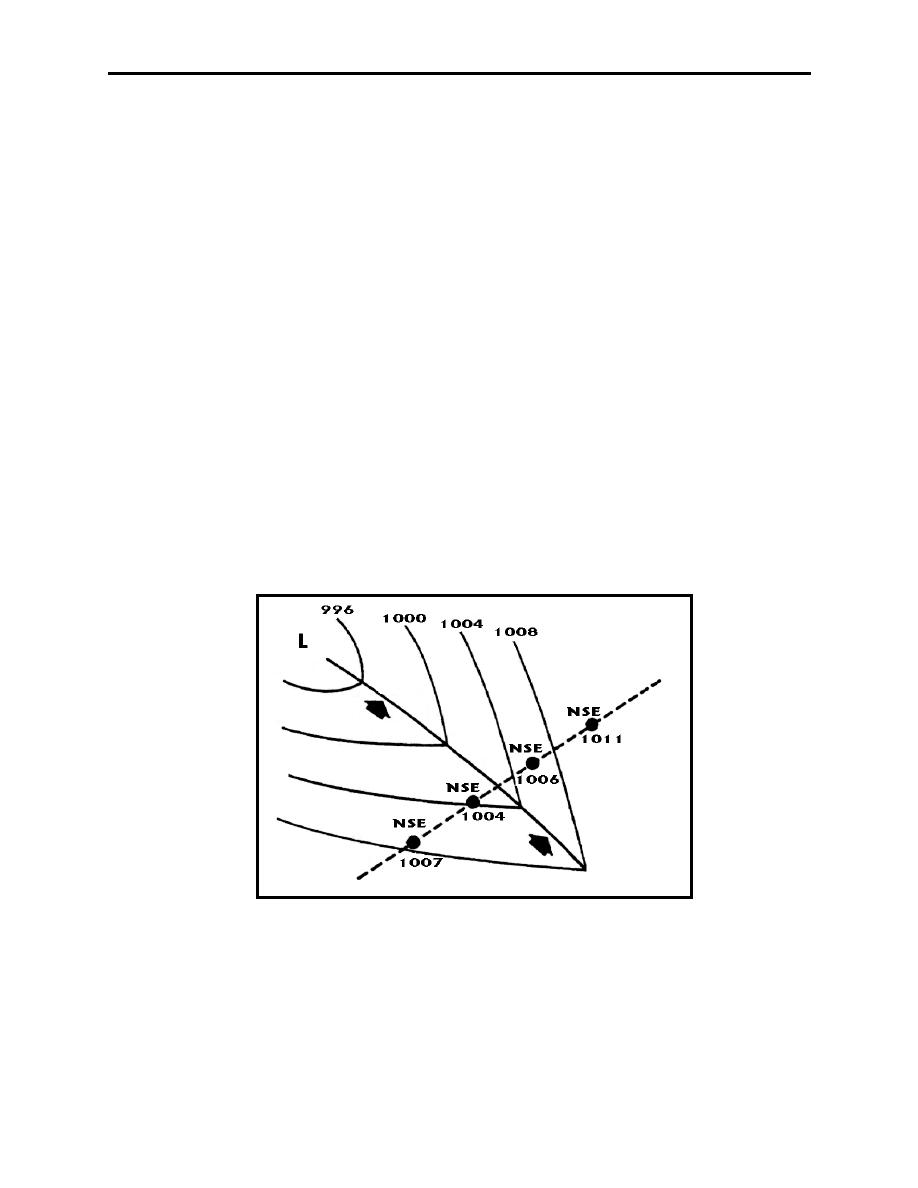 |
|||
|
|
|||
|
|
|||
| ||||||||||
|
|  AVIATION WEATHER
CHAPTER THREE
flying through a front. The amount and rate of change partially indicates the front's intensity.
Strong and weak fronts are accompanied by abrupt and gradual changes in temperature
respectively.
Dew Points
The dew point temperatures reported from weather observing stations are helpful in locating the
position of a front. The dew point temperature and air temperature give an indication of the
relative humidity of the air. Cold air masses will usually have lower dew point temperatures
than warm air masses. Higher dew points indicate a greater amount of moisture available to
produce clouds, fog, or precipitation.
Pressures
All fronts are located in troughs of low pressure. The arrows in Figure 3-8 indicate the trough
(where low pressure extends outward from the center of the low), as well as the direction of
movement of the low-pressure system. Therefore, when a front approaches a station or a pilot
flies toward a front, the pressure decreases. Pressure then rises immediately following frontal
passage. Figure 3-8 illustrates this pressure fall and rise with the time sequence of the weather at
station NSE. The earliest time is pictured in the upper right, when the pressure is 1011 mb, and
the last point in time is at the lower left, with a pressure of 1007 mb. Because of this pressure
change, it is extremely important to obtain a new altimeter setting when flying in the vicinity of a
front.
Figure 3-8 Pressure Changes Across a Front
Winds
Near the Earth's surface, the wind changes direction across a front. In the Northern Hemisphere,
as the front approaches and passes a station, the wind changes direction in a clockwise rotation.
When flying across a front, because of this wind shift you must adjust heading to the right to
Mechanics of Frontal Systems 3-9
|
|
Privacy Statement - Press Release - Copyright Information. - Contact Us |